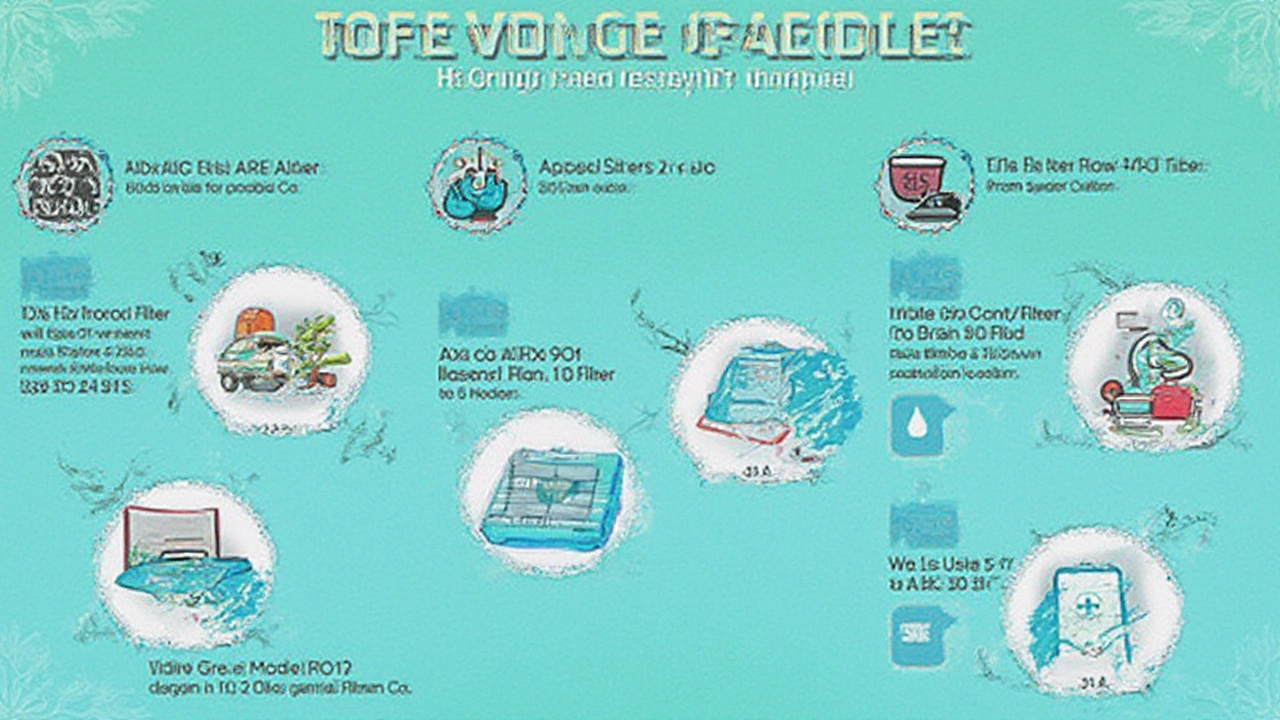Ever opened your glove compartment and found a dusty little box marked "cabin air filter" during a random Google spree—or maybe just wondered why your car smells like a used gym bag sometimes? This tiny, forgettable part can make a big difference in how fresh your ride feels. The right AC filter keeps nasty stuff out—think pollen, road dust, and weird smells. But there’s a problem: standing in the parts aisle, looking at stacks of filters labeled with cryptic numbers and letters, makes you feel like you need a secret code to pick one. Let’s crack that code together and get your car breathing easy again.
Why Does Your Car Even Need an AC Filter?
A lot of people don’t even know their cars have an AC, or cabin air, filter—let alone how important they are. These sneaky filters sit quietly behind the glove box or under the dash, grabbing everything from dust mites to exhaust fumes before they punch you in the nose. Without one, your AC blasts all those nasties right into your face every time you hit the fan. Gross, right? But that’s not the whole story. Some filters can even trap bacteria, mold spores, and stinky odors, making your drives bearable—especially during spring allergy season or when you’re stuck crawling through stop-and-go city traffic.
Since the late ‘90s, most cars in North America rolled out of the factory with these filters installed as standard equipment. Still, lots of drivers have never changed theirs—or even heard of it. If you notice your vents blowing weak, your windows fogging up, or your car stinking like feet, the culprit might be a worthless old filter. Keeping the AC filter fresh isn’t just about comfort. Studies have shown that a clogged cabin filter can cut your AC’s airflow by more than 50 percent. Letting it get this bad can strain your blower motor and make your AC compressor work harder, which could eventually spell money-draining repairs down the road. In short: paying attention to this $15–$30 box saves a ton in the long run.
Different Types of Car AC Filters Out There
It’s tempting to grab the first filter you see online or at the store, call it a day, and never think about it again. Hold on, though. Not all filters are the same. The bewildering array you see at the auto parts store means you’ve got to know what your car needs and what really matters for your driving habits. There are three main types you’ll run across: basic particle filters, activated carbon filters, and fancy HEPA-style filters. Here’s how they break down, plain and simple.
- Particle-only filters: These are the standard foam or pleated-paper kind. They trap dust, pollen, leaves—basically the larger stuff. Cheap, and fine for most folks in average climates.
- Activated carbon filters: These step things up a notch with a layer of charcoal infused in the filter media. That means they’ll grab most everything a particle filter does, plus soak up odors from the road, other cars’ exhaust, even pets and food. If you hate weird smells riding shotgun, go this route.
- HEPA or premium micro-filters: “HEPA” stands for High Efficiency Particulate Air, and these are the heavy hitters. They snag really tiny particles, including allergens and some bacteria. Allergy sufferers or city drivers stuck in smoggy traffic will notice the difference.
Be careful about overkill, though. Not every car has a housing deep enough for the thickest filters. You can’t always drop a HEPA-style into every car—some filter mounts just aren’t made for it, and you might end up jamming it or even messing up your AC system. If you’re unsure, check your owner’s manual or look for model-specific recommendations. Also, don’t be fooled by wild claims about allergy cures; a filter can help, but it’s not magic.

How to Figure Out the Size and Fit for Your AC Filter
The last thing anybody wants is spending 30 bucks on a filter that refuses to fit or lets dust sneak around its edges. Unlike engine air filters, which are usually unique-shaped and foolproof, AC (cabin) filters often come in just a few sizes covering a wide range of cars. But even small differences—a millimeter here, an odd tab there—can mean it won’t seal right and becomes basically useless.
Here’s the real secret: your owner’s manual or the inside of your glove box has the exact size and part number you need. Failing that, every auto parts site lets you plug your make, model, and year into a quick selector. Don’t guess—grab a flashlight, pop your glove box out, and look for the size stamped on the old filter or nearby housing. Typical sizes are something like 8" x 8" or 9.5" x 7"—but even a small mismatch means you’re pushing air through a gap, not the filter.
Some brands—like Toyota, Honda, and Ford—have filters with specific clips or trays. Universal filters rarely fit as well in these applications. If you want to play it safe, order the part from the dealership or get a reputable aftermarket part by cross-referencing that OEM number online. Remember, if the filter looks deformed or you have to force it in, it’s wrong. A good fit should slide in snug but not jammed. If the filter sits directly behind the glove box, popping out the box should reveal it. Some imports, like German brands, tuck them under the cowl at the base of the windshield—this usually involves a couple extra screws or plastic clips, but is still a 10–15 minute job.
How Often Should You Change Your Car’s AC Filter?
So you’ve found the right filter, installed it like a pro, and your AC’s blasting icy-cool, fresh-smelling air again. How long does this happy state last? The short answer: most carmakers say every 12,000 to 15,000 miles, or once a year for the average driver. But here’s the thing—if you deal with dusty roads, tons of pollen, urban pollution, or even just run your fan 24/7 to drown out backseat arguments, you’ll want to check it sooner. The filter fills up like a dustbin and won’t work its magic if it’s clogged.
One ugly fact: in parts of the Southwest, or after a crazy pollen season, you might see that white filter turn brownish-green after just a few months. Live near construction? Drive behind trucks a lot? You’re sucking in even more junk. If your allergies spike, your HVAC system’s airflow drops, or your car starts smelling like your high-school locker room, those are all hints you’re overdue. For folks with sensitive noses or health issues, change it twice a year. It’s cheap insurance for better air and less stuffy rides.
Pro-tip: Label your glove box or filter panel with the date and mileage next time you swap it. Or, set a reminder on your phone tied to your annual inspection or oil change. That way, you’ll never get caught off guard, and you’ll notice the difference in air quality every time.

Tips and Tricks to Get the Most Out of Your New AC Filter
You’ve done the hard part—picked the right filter and dropped it in place. Make it count. Here are some solid ways to make sure it keeps working at its best:
- Don’t cheap out every time: Cheaper filters grab less stuff and break down sooner. Shelling out a couple extra bucks for a stronger filter actually saves you money over time because you won’t have to swap them as often.
- Keep your car’s interior tidy: Less dirt means less stuff clogging up your filter in the first place. Shake out floor mats and vacuum seats when you fill up with gas—that dust and dirt always find their way into the AC system.
- Pay attention to unusual smells or higher fan noises: Both of these can be early signs your filter’s loaded up. A good filter should not just help with allergies—it should keep your car smelling neutral, at worst.
- If you drive through wildfire smoke or after a sandstorm, change your filter soon after—even if it’s only been a few months. That stuff is rough on filters and can linger for weeks in your system.
- Double-check the airflow direction: Most filters have an arrow. Make sure it matches the flow on your air box or filter tray. Getting it backwards might seem harmless, but it actually cuts performance and can let unfiltered air sneak by.
Last fun fact: According to a 2023 survey by a top auto parts retailer, only about 35% of car owners knew their vehicle even had a cabin filter. That means odds are your friends and family are breathing dirty air without realizing it. Next time you chat cars, drop this bit of wisdom—and remind them it only takes a few minutes and minimal tools to make a major upgrade in your daily drive. Fresh air is one of those car luxuries that shouldn’t be reserved for high-end rides. With the right AC filter, every trip feels cooler, cleaner, and healthier for everyone onboard.




